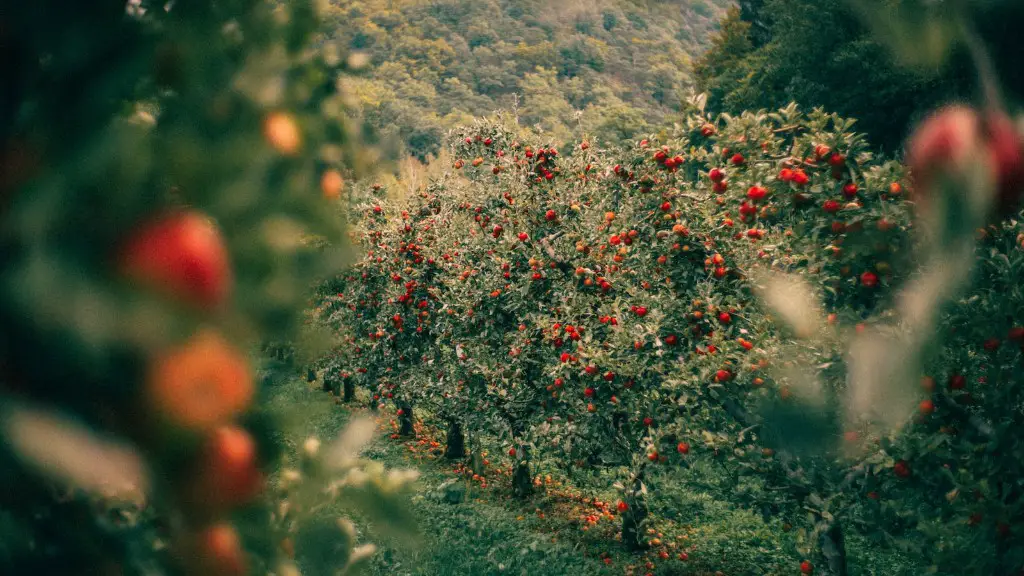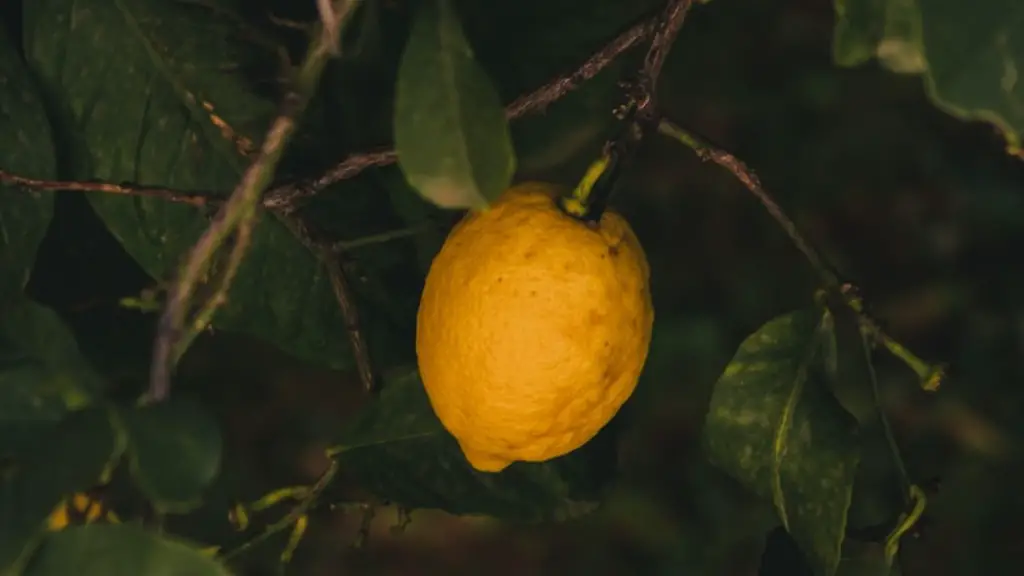The law of gravity states that all objects experience a force, known as gravity, that pulls them toward the centre of the Earth. Apples, being an object, experience the same gravitational pull as the rest of the planet, and are subject to the same laws. As a result, an apple can fall from a tree due to gravity. To understand why, it is necessary to examine why an apple falls from a tree, and what prevents a tree from falling as well.
When an apple falls from a tree, it is due to the force of gravity on the apple. A tree does not experience this same force, however, because it is rooted into the ground. Due to the fact that a tree is rooted, it has a greater degree of stability. This ensures that gravity does not have nearly as strong an effect on a tree as it does a apple, causing the apple to fall while the tree remains upright.
In addition, when an apple falls, it is also due to the fact that the apple has been detached from the tree via the process of ripening. As an apple ripens, its flesh becomes softer, which causes the connection between the apple and the tree’s branches to become weaker. This can cause the apple to break off from the tree and fall due to gravity, as the weakened connection is not strong enough to hold the apple up.
The movement of the wind is also a contributing factor to why an apple can fall from a tree. As the wind moves, it can cause an apple to break from its stem, causing the apple to become detached and fall from the tree. Additionally, the force of the wind can create an updraft that can cause an apple to lose balance, consequently resulting in the apple’s fall.
Finally, the movement of animals, such as bats or squirrels, can also cause apples to fall from a tree. If an animal moves near a tree they can cause the tree’s branches to shake, sometimes causing the apple to loosen from its stem. This can result in apples falling from the tree.
Why Apple Fall from the Tree: Insects
Another common cause of apple falling from trees is the presence of certain insects. These insects are able to weaken the connection of an apple to its stem, causing the apple to break off and then fall from the tree. This can happen because when an insect feeds on the apple, it can break the connection between the branch and the apple, helping to cause its detachment. Furthermore, some insects can feed on branches, weakening the connection of an apple to its stem.
For example, some species of scale insects can cause apples to fall from the tree. These insects secrete a wax-like coating around themselves that can protect them from the tree’s bark. As they feed on the sap of the tree, they can cause the apple to become detached due to their activity.
Moreover, certain species of caterpillars can cause apples to become detached from the tree. These caterpillars, such as the coddling moth, feed on apple leaves and can cause the apple to loosen from its stem. Additionally, certain hornets and wasps feed on apples and can cause them to break away from their stem and fall to the ground.
Furthermore, certain species of borers can cause apples to fall from a tree. These borers feed on the tree itself, and can weaken a branch’s connection to the apple, consequently causing the apple to break away and fall from the tree.
Why Apple Fall from the Tree: Diseases
In addition to insect activity, certain plant diseases can cause apples to fall from a tree. These diseases can weaken the connection between the apple and its branch, causing the apple to become detached and then fall to the ground.
One example of such a disease is fire blight, a bacterial disease that affects apples and pears. This disease can cause the apple to become detached from its branch, making it more prone to the effects of gravity and thus resulting in its fall.
Furthermore, certain fungal diseases, such as apple scab and sooty blotch, can cause apples to fall from a tree. These fungi feed on the apple’s flesh, once again weakening the connection between the apple and its branch. This, in turn, can result in the apple’s detachment and subsequent fall.
Moreover, certain diseases, such as powdery mildew and European canker can also cause apples to fall from a tree. These diseases can cause the apple’s branch to weaken and become detached from the apple. This can result in the apple’s detachment from the branch and its fall.
Finally, certain nutrient deficiencies can also cause an apple to fall from a tree. Apples that are deficient in certain minerals, such as calcium and nitrogen, can become weak and break away from the branch. This can result in the apple’s detachment and its fall.
Why Apple Fall from the Tree: Decay
In addition to insect and disease activity, certain types of decay can cause apples to fall from a tree. These decays can weaken the branch, resulting in the apple’s detachment and fall.
One example of this is brown rot, a fungal disease that can weaken a branch’s connection to the apple. This can result in the apple’s detachment and subsequent fall.
In addition, certain types of dry rot can cause apples to fall from a tree. These decays can cause the branch itself to weaken, once again resulting in the apple’s detachment from the branch and its fall.
Moreover, certain types of black spot can also cause apples to become detached from the tree. These spots can weaken the branch, resulting in its failure to support the weight of the apple and thus causing its detachment and subsequent fall.
Finally, certain types of soft rot can also cause apples to fall from a tree. These decays can cause a branch to weaken and become detached from the apple, resulting in the apple’s detachment and its fall.
Why Apple Fall from the Tree: Weather
Aside from gravity, insect activity, diseases, and decay, certain weather conditions can also be responsible for an apple’s fall. These weather conditions can cause the apple to become detached from its branch and then fall to the ground.
For example, heavy rainfall can cause an apple to become detached from its branch. This can happen because heavy rainfall can loosen the connection between the apple and its stem, causing the apple to break away from the tree.
In addition, strong winds can also cause apples to fall from a tree. These winds can cause the apple to become detached from its stem and fall to the ground.
Furthermore, sudden temperature drops can also result in the apple’s fall. These temperature drops can cause the apple to become too cold, making it more prone to breaking away from its stem and falling.
Finally, hail can also cause apples to fall from a tree. These hailstones can cause the apple to become detached from its stem and fall to the ground.
Why Apple Fall from the Tree: Conclusion
In conclusion, apples can fall from a tree due to a variety of factors. These factors can include gravity, insect activity, diseases, decays, and certain weather conditions. Each of these factors can weaken the connection of an apple to its stem, subsequently causing it to become detached and then fall from the tree.


